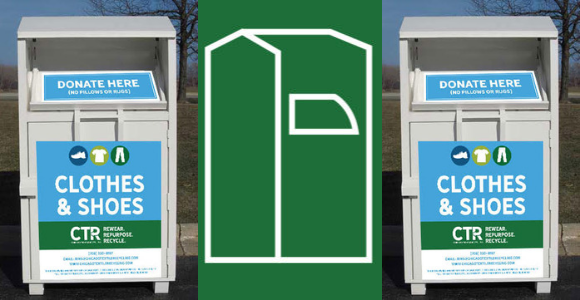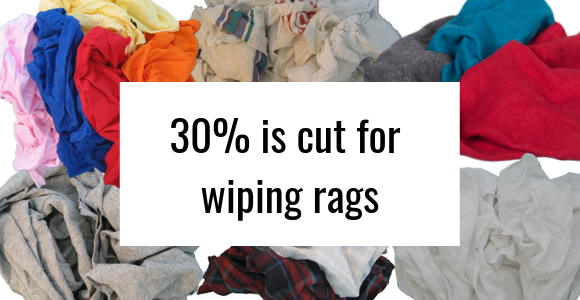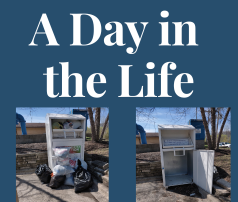
A Day in the Life

What does a day look like for a driver at Chicago Textile Recycling? One of our drivers, who has 17 years of experience, shared all about his day on the roads, picking up loads at different textile bins. He shared, “I’ve been a bin driver for 17 years, and love how most of my days are different and can be pretty interesting. And of course lots of exercising!” What does his day involve?
First Stop

At the first stop of the day, I “jump out of my truck [and] open the back door…”. So begins a day in the life of a bin driver. Once the truck is opened, he opens the bin and begins to pull out all the bags. He noted that “at times all the clothing are not in closed bags sealed” but are falling out all over the inside of the bin. This can be a problem if snow or rain leaks into the bin because wet or moldy items can ruin a whole load of donations. Part of addressing this common problem at bins includes bringing 13 gallon kitchen bags to secure loose items. Having everything bagged properly also makes everything easier to transport and load on and off his truck.
Throughout the Day

Once he gathers everything out of the bin, “I start to toss them up on the bed of my truck. Then I [will] do this 13 more times.” Competing with city traffic, changing weather and lifting heavy bags of clothes, traveling from bin to bin can prove emotionally and physically exhausting at times. However, knowing as a driver that you are working toward a good cause of keeping textiles out of landfills can also be emotionally rewarding.
Items that Cannot be Recycled

At times, items are left at or in our bins that we cannot recycle, such as kitchen items, hard toys, and other things we have posted about before. What happens to these items when our truck drivers find them? And why are they a problem?
If our drivers find items at the bins that are not textiles to be recycled, attempts will be made to dispose of these items properly at or near one of our recycling bin locations. However, this is not always possible for various reasons, so it is important for those choosing to donate to take a look at our Acceptable Items list before bagging up their belongings.
Other Problems Our Drivers Face
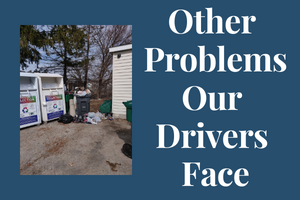
Our driver also mentioned some “interesting moments” he has had over the years or even has regularly as the seasons change. He noted that “in the winter we have to dig around the bin to make sure the snow is removed so donors have safe access to the bin.” This can be a big problem when dealing with textile donations as we noted above that textiles that become wet and stay wet (from snow or rain) can quickly turn moldy which can ruin an entire donation load. Our drivers can’t bring these items on their trucks as they could affect other donations on the truck as well.
In the summertime, “there have been moments of bee or wasp nests hiding inside the bins.” This not only can be a problem for the drivers as they have to safely find a way to clear these out, but can pose a deterrent for donors desiring to drop off their items and possibly getting stung when trying to do something good by keeping textiles out of landfills.
Lastly, they are constantly trying to maintain each site, ensuring the bins don’t overflow and items are kept dry inside the bins. There are weekly checks and pickups at each bin to ensure each one is properly maintained.
Work for the Cause
We are thankful for our drivers here at Chicago Textile Recycling for working hard toward our goal of keeping textiles out of landfills. We are grateful for our readers who raise awareness and spread the word about where to drop off textile donations and how to get involved. We are grateful to those who reach out when our bins don’t look as they should so we can address the problem quickly and maintain our high standards following the S.M.A.R.T. Collection Bin Code of Conduct. If you have a textile donation and want to know our closest bin or partner resale location, please contact us so we can help you dispose of your items.

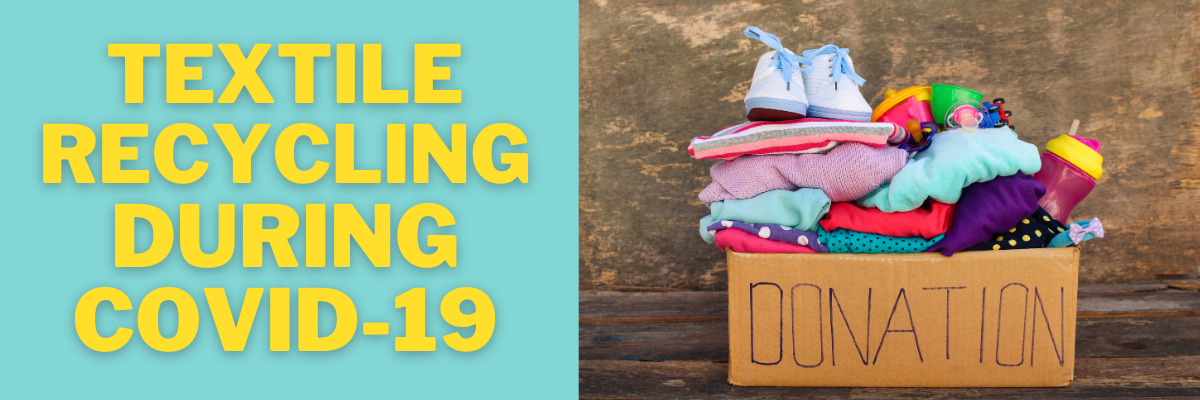



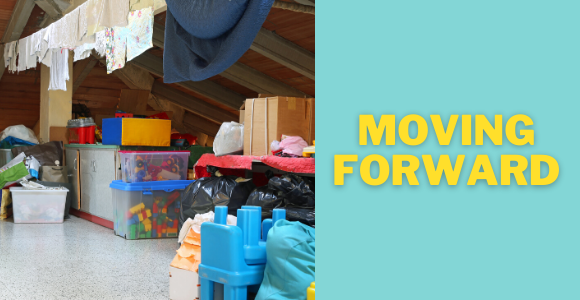


 Most people assume that once underwear is worn and no longer wearable due to holes and broken elastic, it is trash. Either the person is embarrassed about having someone else see their used undies, or it just doesn’t cross their mind that this would be a product that recycling facilities may want. However, to clarify the confusion, CTR does accept used panties and underwear as long as they are clean, dry, and odor-free, and they actually are in high demand due to people being so reticent about donating them. When it comes to keeping textiles out of landfills, we want to recycle as much as possible…into reusable clothing if possible, into wiping rags, or into basic fiber content. So send us your undies!
Most people assume that once underwear is worn and no longer wearable due to holes and broken elastic, it is trash. Either the person is embarrassed about having someone else see their used undies, or it just doesn’t cross their mind that this would be a product that recycling facilities may want. However, to clarify the confusion, CTR does accept used panties and underwear as long as they are clean, dry, and odor-free, and they actually are in high demand due to people being so reticent about donating them. When it comes to keeping textiles out of landfills, we want to recycle as much as possible…into reusable clothing if possible, into wiping rags, or into basic fiber content. So send us your undies! Another item most people assume may not be an acceptable donation are bras, but there in fact exists a high demand for used bras. Brand new bras are very expensive, and so those that are used but still in workable condition should definitely be donated to your nearest bin. Resale store shoppers and even those receiving bulk donations in third world countries appreciate and need affordable bras. Even bras you may no longer consider wearable due to pilling or small holes or loosened elastic can be worn by others in need. If your bra is broken, recycle it anyway and allow CTR or the resale store be the final judge on how we can use it.
Another item most people assume may not be an acceptable donation are bras, but there in fact exists a high demand for used bras. Brand new bras are very expensive, and so those that are used but still in workable condition should definitely be donated to your nearest bin. Resale store shoppers and even those receiving bulk donations in third world countries appreciate and need affordable bras. Even bras you may no longer consider wearable due to pilling or small holes or loosened elastic can be worn by others in need. If your bra is broken, recycle it anyway and allow CTR or the resale store be the final judge on how we can use it. One item you may think twice about donating is children’s clothing that has stains or holes in the knees. Again, children’s clothing is in high demand and we definitely do accept clothes with both of those imperfections. As long as the clothing is clean, dry, and free of odor, we accept it and use it in any reused or recycled form we can. When in doubt, recycle. Allow the experts in textile recycling make the final call in knowing if a textile is in fact as its end of life. Be satisfied in knowing that you have done your part in helping others and keeping textiles out of landfills.
One item you may think twice about donating is children’s clothing that has stains or holes in the knees. Again, children’s clothing is in high demand and we definitely do accept clothes with both of those imperfections. As long as the clothing is clean, dry, and free of odor, we accept it and use it in any reused or recycled form we can. When in doubt, recycle. Allow the experts in textile recycling make the final call in knowing if a textile is in fact as its end of life. Be satisfied in knowing that you have done your part in helping others and keeping textiles out of landfills. Lastly, pantyhose is an item that we do accept, but may fall into a slightly different category due to lack of demand. You are welcome to donate your used pantyhose/stockings/tights to us, or another option could also be found on
Lastly, pantyhose is an item that we do accept, but may fall into a slightly different category due to lack of demand. You are welcome to donate your used pantyhose/stockings/tights to us, or another option could also be found on 

